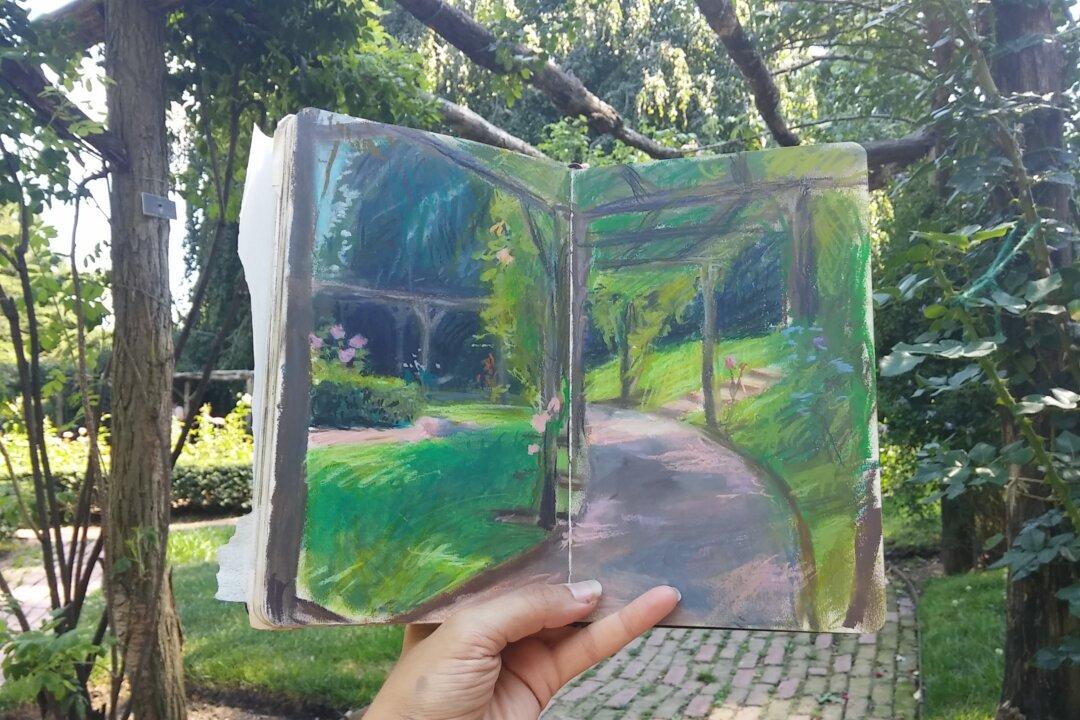NEW YORK—If objects could speak, those made by Pierre Gouthière (1732–1813) would continue to whisper the incredulous wonder at creation. The 18th-century French master chaser-gilder could make bronze look as ephemeral as fire, as delicate as rose petals, and as textured as camel hair. Candle wax probably never dripped on the candelabras he made. Most of his utilitarian objects—vases, clocks, wall lights, and doorknobs—were the ultimate conversation pieces, to be admired.
Whenever Gouthière would finish a new piece, there was a buzz of excitement in the air. The press would report on it; advertisers would publicize it. The public would rush to see his latest piece for a short window of time before the sublime decorative objects would be whisked away for the pleasure of the king and his court.
[gallery size=“large” ids=“2189265,2189266,2189267,2189284,2189268,2189271,2189272”]
That buzz still echoes today. The Frick Collection has opened a window into 18th-century French high taste through Gouthière’s creative genius. The exhibition, Pierre Gouthière: Virtuoso Gilder at the French Court, is on view along with a series of programs through Feb. 19, 2017. All of the collectors approached for this exhibition were excited to lend their pieces, said Frick curator of decorative arts Charlotte Vignon.
The craftsmanship of chasing and gilding is a lengthy and complicated procedure (watch video below). First, Gouthière would create molds from an architect’s drawn designs. After the molds were cast, he would hammer the surface of the metal to create all of the textures, and then he would gild them.
Working like a sculptor and jeweler, Gouthière’s chasing and gilding skills were so high that his pieces sold at prices equal to, or higher than, paintings and sculptures by his contemporaries, like Jean-Honoré Fragonard, François Boucher, and Étienne Maurice Falconet. Auction houses would always mention Gouthière’s name when selling his neoclassical pieces—rarely the case for other decorative artists.
The neoclassical style of 18th-century France, imbuing analytical restraint and moral clarity, can come across as rather cold. Gouthière’s pieces, in contrast, are infused with warmth and vitality.
[gallery size=“large” ids=“2189270,2189269”]
The naturalism in the leaves of his wall lamps, for example, is incredible. The leaves are so thin and full of life that they almost look like they had been dipped into gold, but Gouthière actually worked countless hours modeling, casting, chasing, and gilding to transform the metal into something that looks so fresh and lively, Vignon said at the opening.
An Unforgettable Window Knob
Gouthière was famous for creating unique solutions for attaching the gilded bronze to alabaster, marble, granite, and porcelain, for each of his pieces. The capital for a porphyry column that Gouthière interpreted after a design by the architect François-Joseph Bélanger (circa 1775–1780) has about 48 nuts holding it together from the inside—invisible to the eye.







